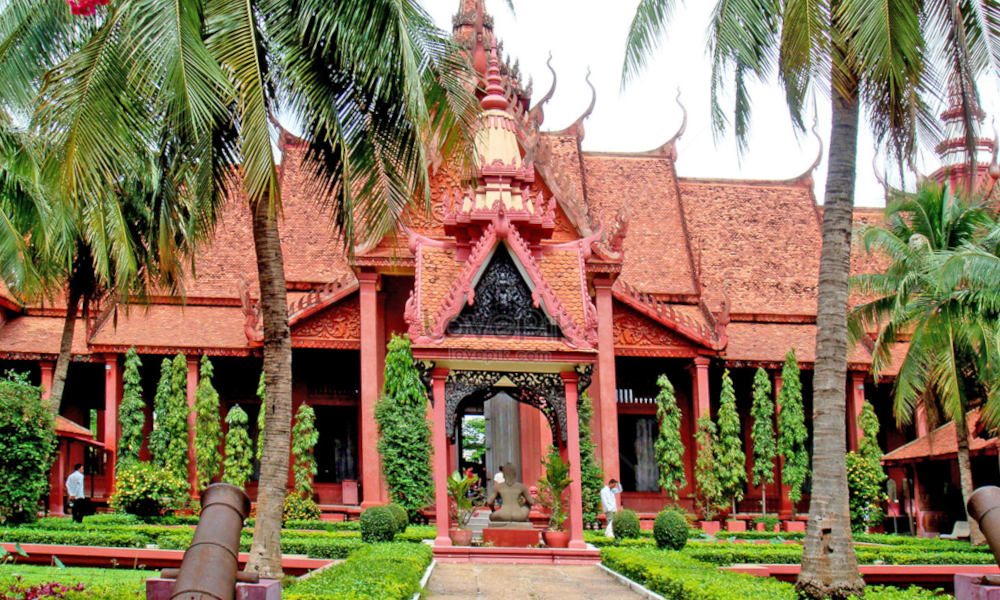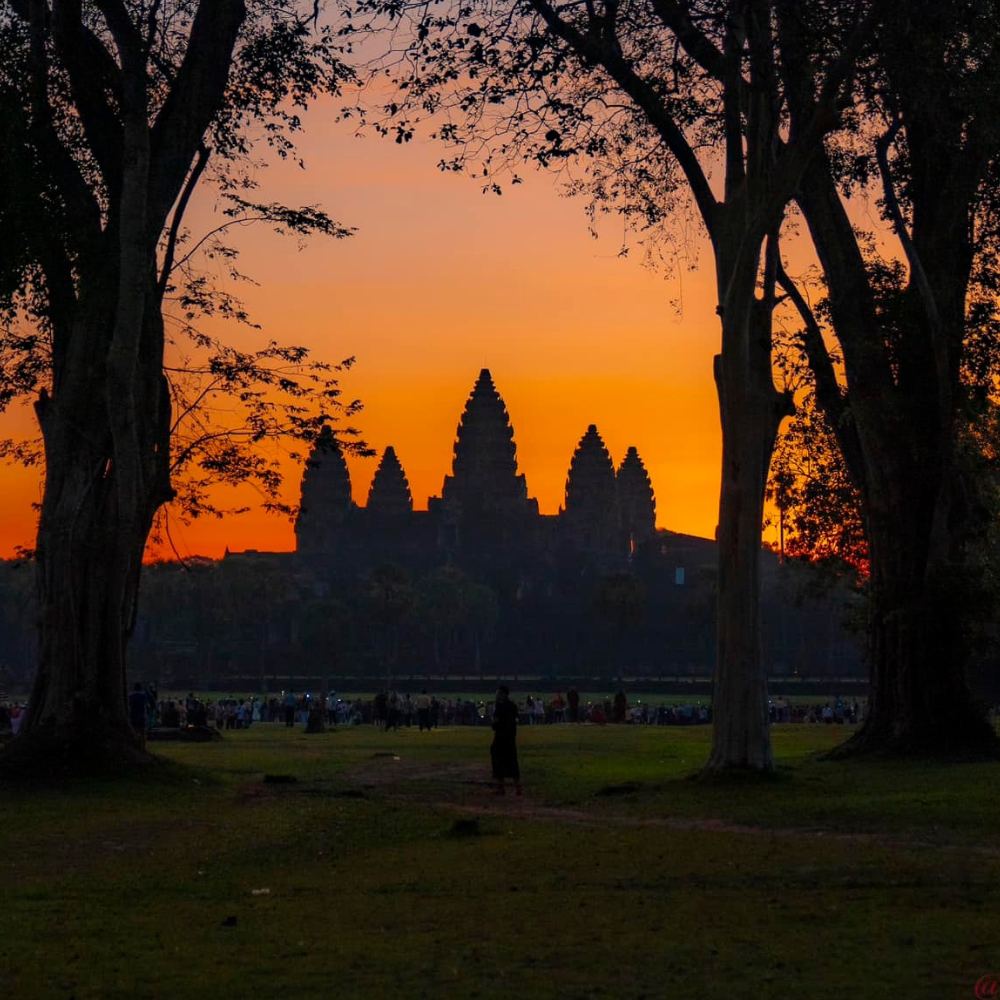The national museum of Cambodia - Phnom Pehn

Located just north of the Royal Palace, the National Museum of Cambodia features an elegant terracotta building, built between 1917 and 1920, with a lovely courtyard garden. It houses the world’s finest collection of Khmer sculpture, showcasing over a millennium of artistry.
Table of Contents
ToggleThe museum has four pavilions overlooking the garden, and visitors typically start on the left and move clockwise. The first notable piece is a large fragment of a bronze reclining Vishnu statue, found at the Western Mebon temple near Angkor Wat in 1936.
For a more enriching experience, it’s recommended to hire a tour guide. Visitors can arrange this at the entrance, with tours available in Khmer, English, French, and Japanese for $3 per hour.
An amazing Angkor Wat Sunrise Tour that takes you back in time to see the awesome temples of the Khmer Empire.
Layout and Design
The National Museum of Cambodia, located directly across from the Royal Palace, houses an impressive collection of art from the Angkor period, often referred to as Cambodia’s “golden age.” The museum features a beautiful central courtyard, which enhances the visitor experience. A notable highlight is the statue of King Jayavarman VII, depicted in a meditative pose, alongside other significant exhibits such as elegant representations of Hindu deities, ancient stelae inscribed in both Sanskrit and Old Khmer, and various artifacts from a prehistoric burial site.
Photography is prohibited within the museum’s interior; however, visitors are permitted to take pictures in the central courtyard. This courtyard also features the original statue of the “Leper King,” which is actually a representation of Yama, the Hindu god of death, originally from the Terrace of the Leper King in Angkor Archaeological Park. Additionally, the charming park situated in front of the museum serves as the venue for the annual Royal Ploughing Ceremony, an event that forecasts the success of the upcoming harvest. There have been anecdotes about visitors using umbrellas to shield themselves from bat droppings, but it is worth noting that the bats relocated following the museum’s renovation in 2002.
Trip Advisory
- Photography is prohibited within the museum galleries; however, visitors are encouraged to capture images of the museum’s exterior and courtyard. Those interested in obtaining photographs of the museum or its collection for research or publication purposes should reach out via email to request an application form or consult with a staff member.
- Smoking is strictly forbidden inside the museum premises.
- The museum store can be found at the main entrance, offering a selection of postcards, souvenirs, replica sculptures, and books covering various topics related to art and culture.
- Contributions to the museum are highly valued and play a vital role in supporting operational expenses, initiatives aimed at preserving Cambodian heritage, and the upkeep of the museum. Donation boxes are conveniently located near the main entrance, or visitors may speak with a staff member for further assistance.
Should Visit or Not
The National Museum of Cambodia, located in Phnom Penh, is an essential destination for those with an interest in the history and culture of Cambodia. It boasts an extensive collection of Khmer art and artifacts, featuring sculptures, ceramics, and ethnographic items.
Reasons to visit:
- Khmer art: The museum is renowned for possessing one of the most exceptional collections of Khmer sculpture globally.
- Architecture: The terracotta structure of the museum exemplifies traditional architectural elegance.
- Courtyard: Visitors can enjoy a serene garden courtyard, providing a tranquil space for relaxation.
- History: The museum’s exhibits encompass artifacts from various eras of Cambodia’s historical timeline.
Highlights to explore:
- Bronze artifacts: Discover pottery and bronze items that date back to the pre-Angkorian era.
- Khmer architecture: Admire the iconic four-faced statues, often referred to as “The Smile of Angkor.”
- Vishnu statues: View a significant fragment of a bronze reclining Vishnu statue, which was retrieved from the Western Mebon temple near Angkor Wat.
Location & How to Get There
Address: Street 13, Sangkat Chey Chumneas, Khan Daun Penh, Phnom Penh, Cambodia
Location: located on Street 13 in central Phnom Penh, next to the Royal Palace. The visitor’s entrance to the compound and the admissions ticket booth are at the corner of Streets 13 and 178. It normally takes over an hour to visit it.
Entrance fee: $5 for foreign visitors, 500 riels for Cambodians. Children and school groups are free.
Open time: 8 AM-5 PM daily, last admission 4:30 PM.

